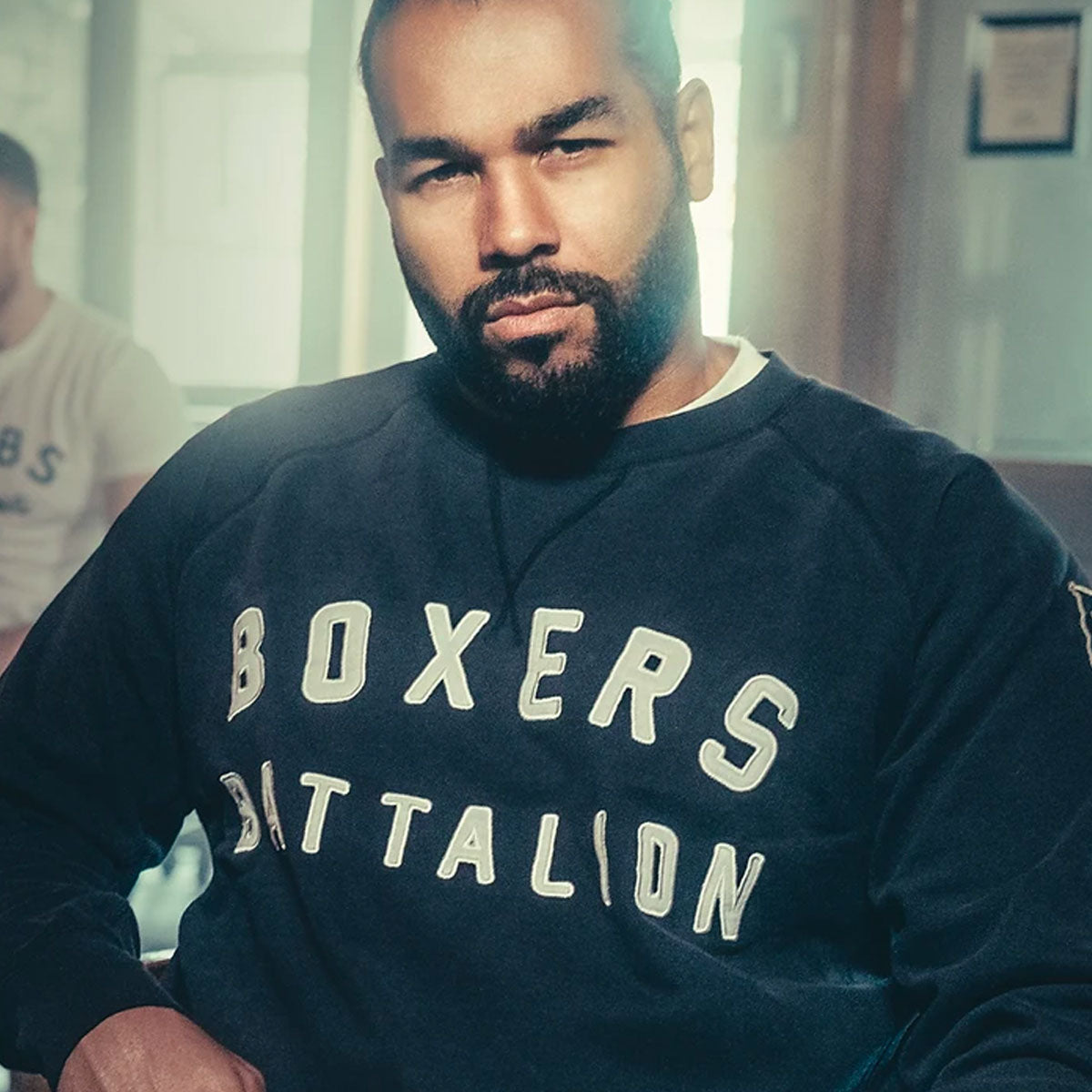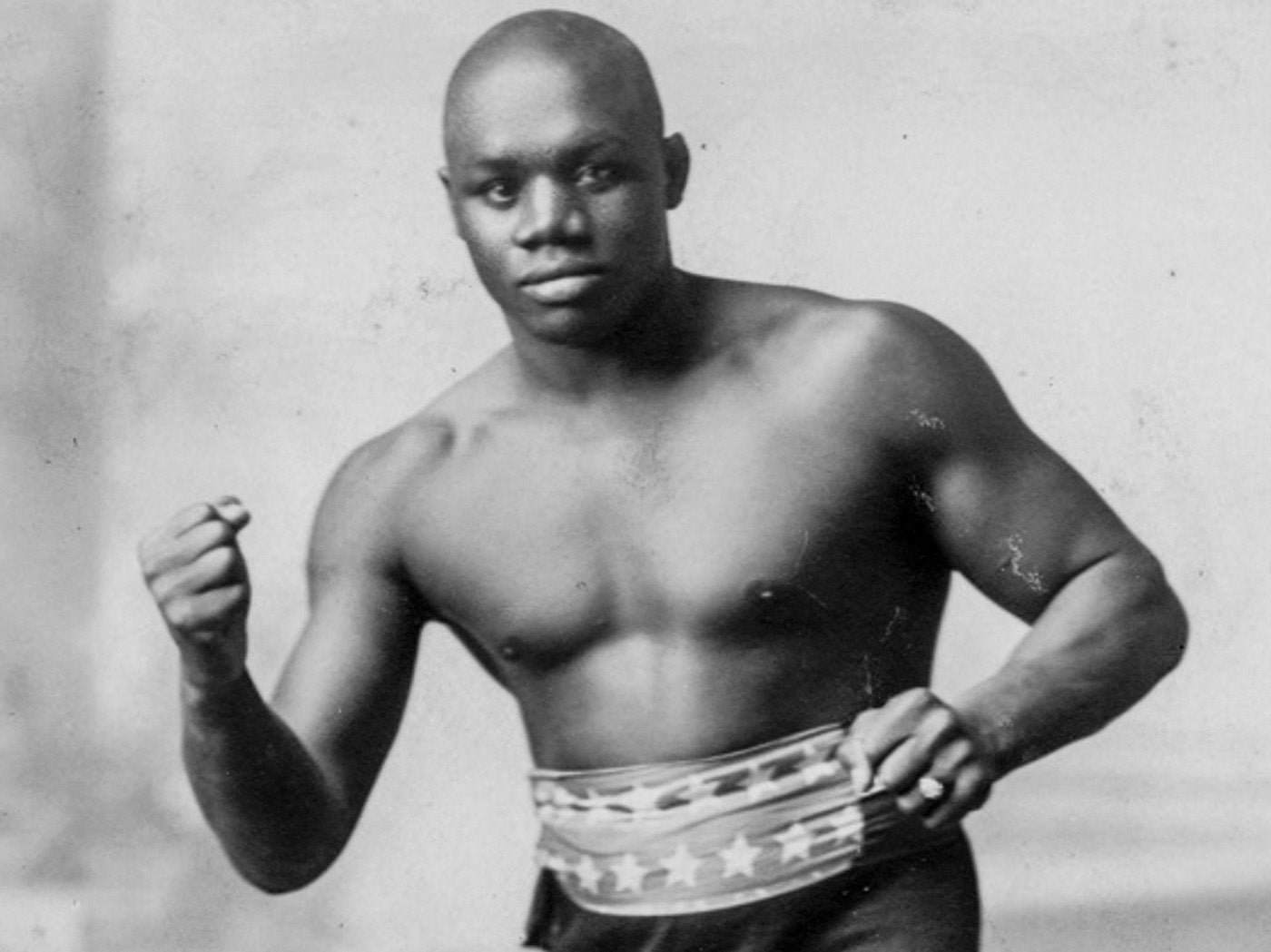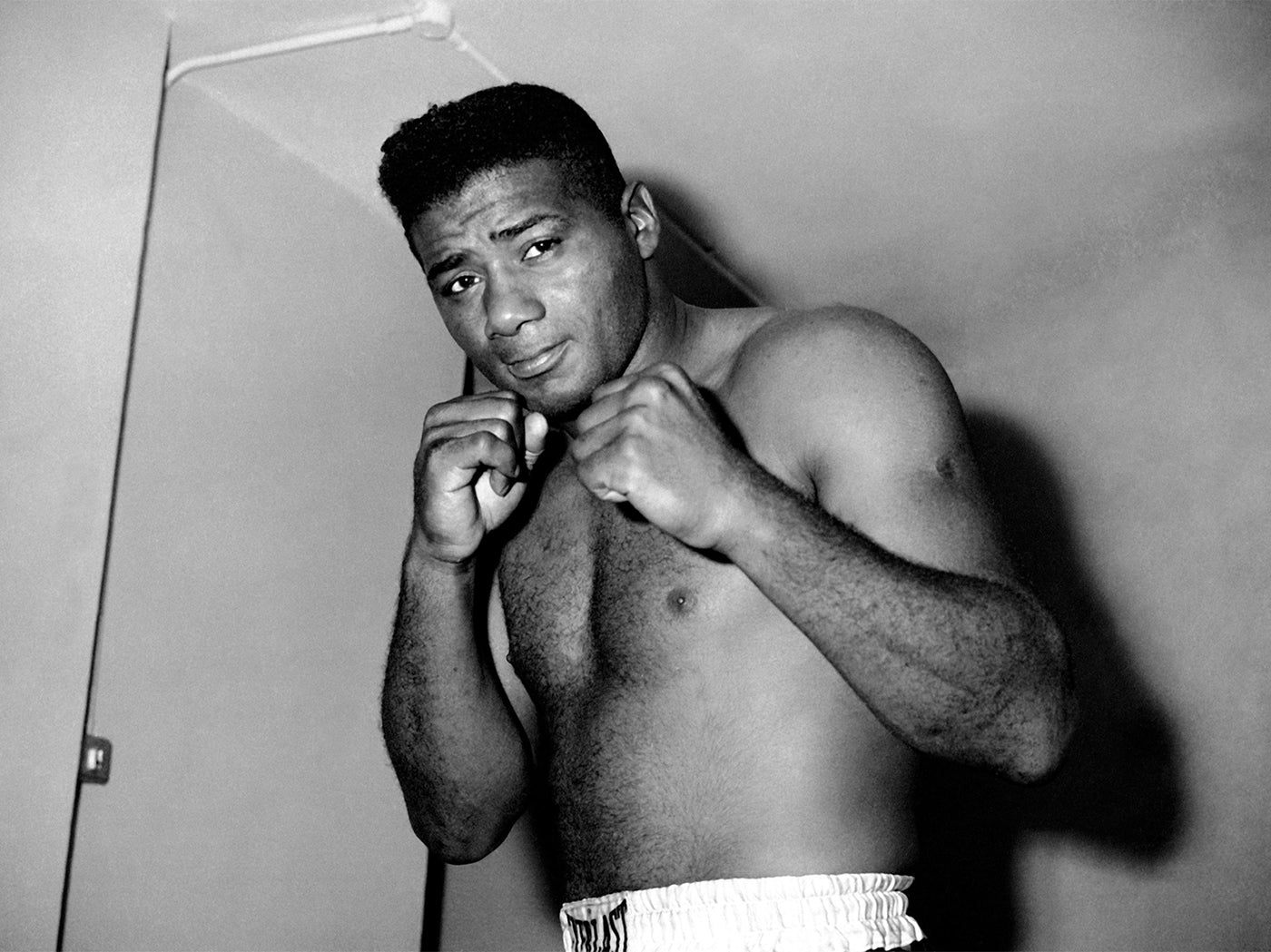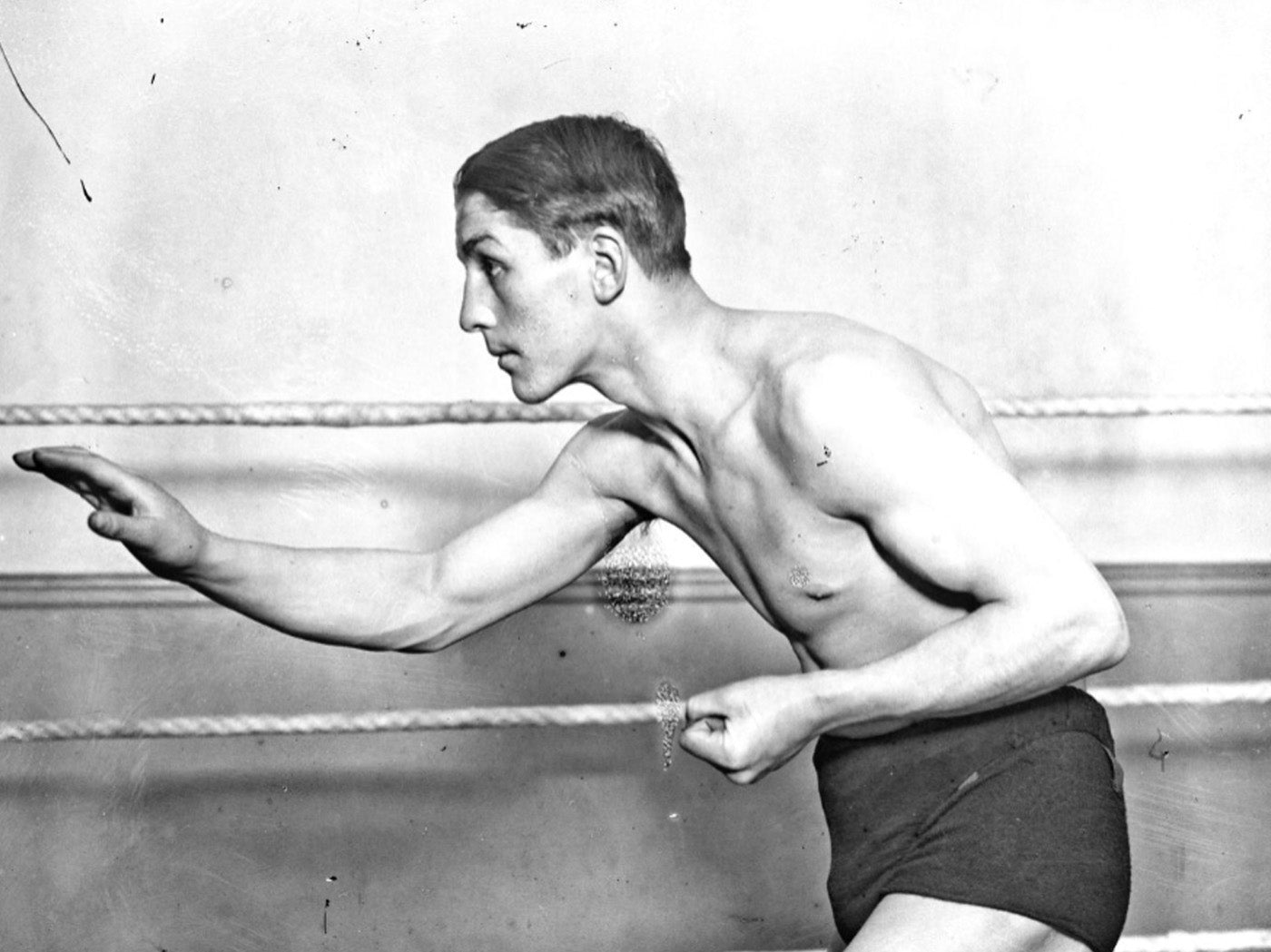‘There was one man who was even smaller than I, who I wouldn’t fight because I knew he would flatten me. I was afraid of Sam Langford.’
Jack Dempsey

Samuel Edgar Langford was not just a little bit smaller than Dempsey, but a full half foot shorter at a fraction over 5ft 6in. Given the moniker of the ‘Greatest Fighter Nobody Knows,’ Langford was a feared and avoided man from lightweight through to heavyweight for 23 years.
Born on 4 March 1883, Langford was the grandson of an American slave who had headed to Weymouth Falls in Nova Scotia, Canada in search of a better life. Unfortunately, due to taking relentless beatings from his father, he left Canada and headed Stateside to Boston, Massachusetts.
After winning the amateur featherweight championship in Boston, aged 15, Langford had his professional debut on 11 April 1902, shortly after his 16th birthday against Jack McVicker at the Lenox Athletic Club, Boston, stopping his opponent in the forth round.

The young Sam Langford
On 8 December 1903, Langford took on Joe Gans in a nontitle fight at the Criterion Athletic Club, Boston. Gans had fought 161 at this point, incurring only eight losses, compared to Langford who had only won 16 of his 24 outings. The fight wasn’t a mismatch, but Gans was certainly the bookie’s favourite. However, 20-year-old Langford took the fight to Gans and outpointed him over 15 rounds, in what was a huge upset. In another era, Langford would have been fast tracked to a bonafide world title, but unfortunately, this was a taste of things to come for the vastly talented Massachusetts resident.
In his first 24 months as a professional, Langford had fought 42 times, however, his record did not do the teenager justice. Despite clocking up 26 victories, many by stoppage, he had two dubious losses and an incredible 14 draws, many of which had been pre-agreed by the managers of both opponents.

On 5 September 1904, Langford challenged the Barbados Demon, Joe Walcott, for his world welterweight title at Lake Massabesic Colosseum, New Hampshire, in front of 1,200 people. Both fighters weighed in at 142lbs, with Walcott boasting a record of 87-15-17, however, it was Langford who was the aggressor, putting the champion on the canvas in the third session and dominating the fight. Despite coming away unscathed and the champions face bludgeoned, the judges awarded a draw. This would very sadly be as close as Langford came to winning a non-coloured title.
Over the next 19 months, the Boston Bonecrusher fought a further 25 times, once again, with suspect results. Despite winning 14 of the contests, he also lost two, drew seven and had two no-contests. Having worked his way through the various weight divisions from lightweight upwards, beating some formidable opposition such as Jack Blackburn and Joe Jeanette, Langford was now pitted against arguably one of the best heavyweights of all time, challenging the Galveston Giant, Jack Johnson for his ‘world coloured heavyweight title.’ (N.B - Blackburn went on to become the trainer for the Brown Bomber, Joe Louis. Langford and Blackburn would fight six times in total). Despite giving away a six inch height differential and 30lbs in weight, on 26 April 1906, Langford gave a good account of himself, however, after being floored in the sixth round, the scores at the end of the full 15 heavily favoured Johnson.
Twelve months later, Langford travelled to the National Sporting Club in Covent Garden, taking on Tiger Smith for the Commonwealth title. Some also billed the contest as a world middleweight title fight. Smith was vastly inexperienced having only fought three times, which included one loss. To be placing him in the ring with 63 fight veteran, Langford was a mismatch and predictably, Langford knocked out his opponent early doors in the fourth round.
A little under three months later, Langford took on Larry Temple for what was billed as the ‘Coloured 158lbs Middleweight Title.’ Weighing nearer the welterweight limit, Temple took a 10 round beating in what was classified as a ‘No Decision,’ contest, which meant Langford would have been granted the victory if the contest had been sanctioned. The quest to gain credible recognition continued.

Four weeks later, Langford beat Jim Barry over 10 rounds in a Newspaper decision, with The Evening World saying ‘no egg ever received a worse beating" than Barry.’ Three weeks later, they locked horns again, with unsurprisingly the same outcome.
Four weeks later, Langford took on Young Peter Jackson, who he’d already beaten three times, yet also encountered one loss and one draw. On 21 November 1907, the pair battled over 20 rounds for the World Coloured Middleweight Title, with Langford emerging the clear winner. In the next eight weeks, Langford took on Jim Barry twice, getting knocked down in the opening session in their first encounter, yet rallying back to a points victory, and the second encounter was declared a draw. The pair would eventually fight each other 12 times during their careers, with Barry never gaining victory.
On 24 May 1909, Langford, now an 87 fight veteran (58-6-23), travelled across the pond again to Covent Garden and took on Yorkshireman, William ‘Iron’ Hague, for what was billed as the English Heavyweight Title. Despite only one loss in 19 fights, the Boston Terror effortlessly knocked out Hague in four rounds.
Two months later, Langford took on Klondike Haynes for the vacant World Coloured Heavyweight Title, after Jack Johnson vacated it after refusing to fight the Boston favourite. Despite a newspaper decision victory for Langford, he claimed the title and proceeded to defend it multiple times over the coming years.
In the meantime, Joe Jeanette and Sam McVey had fought for ‘the’ title, with McVey defeating Jeanette. As a result, there were now two champions claiming the World Coloured Heavyweight Championship, which inevitably put the pair on a collision course. On 6 September 1910, Langford beat Jeanette on points with a carefully crafted performance over 15 rounds. Watching from the shadows, world heavyweight champion, Jack Johnson refused to give Langford a shot. At a later date he admitted that he feared the loss.
Over the next two years, Langford clocked up some impressive victories against the likes of Stanley Ketchel, Battling Jim Johnson and Joe Jeanette, who he would eventually fight six times (Two draws, two losses and two wins.)
In December 1911, Langford travelled to Australia for 18 months, where he fought 11 times. The first encounter was on Boxing Day 1911 against Sam McVey, which he lost on points over 20 rounds. The pair fought six times during that period, with McVey losing four and the last a draw. Consequently, Langford won his crown back.
By 1913, Langford had become a feared fighter. The reigning world heavyweight champion, Jack Johnson had beaten Langford on points in their one and only encounter in 1906, but refused to fight the Canadian born favourite on the grounds that he could earn more fighting white boxers. However, Johnson quickly contradicted his claim by giving Battling Jim Johnson a shot at the title on 19 December 1913.

Jack broke his arm in the third round and despite this massive advantage, Battling Jim failed miserably to capitalise on the champion’s misfortune and the pair walked away with a draw. Three months later, Langford faced Jim for the second time and once again beat the Texan. They would eventually fight a total of 12 times, with Johnson losing 11 and drawing once. Their last encounter was in September 1918 and there may have been more if Battling Jim hadn’t succumbed to the Spanish flu pandemic in November 1918, perishing at only 31 years of age.
Another ‘marathon’ opponent was Harry Wills, who Langford fought 16 times, losing 12, winning two and drawing two. Despite being on the losing end for the majority of their encounters, Wills on many occasions opened up to the media about just how hard Langford hit, focusing on both of his knockout losses. Here’s what he said in the February 1953 edition of Boxing and Wrestling Magazine. ‘I was knocked out three times in my career, twice by Langford and in my last fight by Paulino Uzcudun. I still don't know, except from hearsay, what punches Sam used to knock me out. The first time it happened was 1914. We were supposed to go 20 rounds, so when the fourteenth began I was going easy. Sam was in a bad way. I backed him around the ring trying to set him up for a one punch finish. His eye was bleeding and the last thing I remember was having him against the ropes just about five feet from his corner. It must have happened right then.’
In the meantime, Jack Johnson had lost the heavyweight crown to Jess Willard in 1915 and it took over two decades before another African American ruled the world heavyweight championship roost.
By 1920, Langford’s sight was perishing at a rapid rate due to injuries sustained in the ring and he fought on instinct and a desperate need for income. However, that’s not to say he was washed up entirely. On 5 June 1922, Langford knocked out Tiger Flowers in the second round. Flowers went on to beat the formidable Harry Greb four years later for the world middleweight title.
Seventeen fights later on 31 March 1917, now boasting a record of 187 victories, 38 losses and 51 draws, Langford knocked out Jack Savage in the first round at the Chapultepec Bull Ring, Mexico City. His prize was the Mexican heavyweight title, which was strange as neither fighter was from Mexico. Either way, Langford defended said belt a further four times and recalled the fight in an interview with the Weymouth Carrier in May 1935. ‘I went down to Mexico in 1922 with this here left eye completely gone and the right just seeing shadows. It was a cataract. They matched me up with Kid Savage for the title. I was bluffing through that I could see but I gave myself away. They bet awful heavy on the kid when the word got round. I just felt my way around and then, wham, I got home. He forgot to duck and so I was heavy weight champion of Mexico.’

Langford’s final contest was on 2 August 1926, where he was stopped in the opening stanza by Brad Simmons. By now, 43-year-old Sam was completely blind and had racked up an unofficial record of 314 fights (210 wins, 44 losses and 52 draws), however, he was sadly penniless. After an article in 1944 written by Al Laney from the New York Herald Tribune, entitled ‘A Dark Man Laughs,’ around $10,000 was raised by fans to help Langford’s plight. The money helped to pay for eye surgery which thankfully, was successful.

On 12 January 1956, Samuel Edgar Langford died at the age of 72 in Massachusetts. He may never have secured that all important world heavyweight title, but he was however inducted into Canada’s Sports Hall of Fame in 1955 and the International Boxing Hall of Fame in 1990. Without a doubt, Langford is one of the greatest boxers of all time. Minus the colour prejudice restricting his choice of opponents, his development was surely stunted. In another era, with the correct management and promotion, he would have earned plaudits as a multi-weight world champion and it’s safe to say the majority of his draws and a number of his losses would have been straight wins. Sam Langford was a boxing sensation and superstar, without the modern day fairy dust topping. In a career that spanned over 300 fights in 23 years, battling in five weight divisions, yet standing only a fraction taller than Manny Pacquiao and often heavily outweighed, Langford was an enigma with his destructive power and ring-craft. Hats off to the Boston Bonecrusher.
Paul Zanon, has had 11 books published, with almost all of them reaching the No1 Bestselling spot in their respective categories on Amazon. He has co-hosted boxing shows on Talk Sport, been a pundit on London Live, Boxnation and has contributed to a number of boxing publications, including, Boxing Monthly, The Ring, Daily Sport, Boxing News, Boxing Social, amongst other publications.






